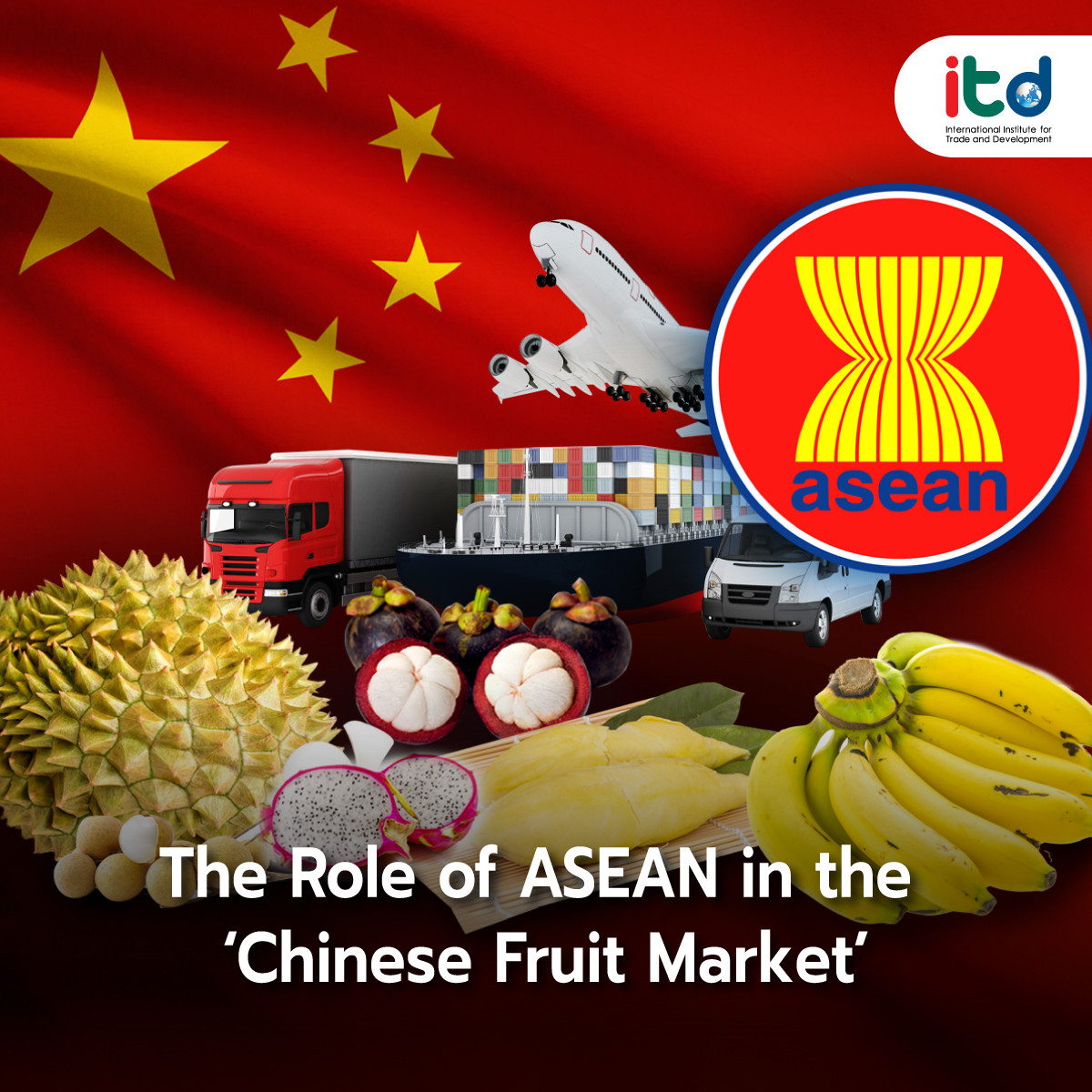About Documents
Since 2016, China has shown a trend of increasing fruit imports from foreign countries, due to a growing demand for tropical fruits within the country. As of the latest data in 2023, China’s fruit imports amounted to over 16.85 billion US dollars, a 15% increase from 2022. The majority of fruits imported by China include fresh durians (40%), cherries (16%), frozen durians (6%), bananas (6%), mangosteens (4%), and coconuts (4%).
The primary sources of fruit imports are ASEAN countries, namely Thailand, Vietnam, the Philippines, Malaysia, and Indonesia. These countries play a significant role in the ASEAN fruit trade in the Chinese market. Over the past year, ASEAN countries have been competing to capture a larger market share. For instance, China has allowed the import of fresh durians from Thailand, Vietnam, and the Philippines. The competition for market share is expected to intensify in the future, especially if Malaysia can obtain permission to export fresh durians this year.
The fruit market in China is large and continues to grow, making China a high-potential market for ASEAN fruits. Currently, in fruit imports, China leads in setting the trade direction, including compliance with regulatory requirements that producers and exporters must follow, such as food safety law, law of entry and exit animal and plant quarantine, etc.
China also takes the lead in cooperating with ASEAN countries that share borders in developing and facilitating fruit transportation. For example, the Chinese government established the China-ASEAN Fruit Trading Center in Guangxi Zhuang Autonomous Region, which borders Vietnam, in August 2023. This center serves as a comprehensive land-based import-export fruit trading hub, linking to Laos and Thailand.
In December 2023, China and Vietnam upgraded their cooperation by launching the Longbang Port (Guangxi Zhuang, China) and Tra Linh (Cao Bang, Vietnam) border gate after upgrading them to international border gate. These modern customs points support 24-hour transportation and the use of autonomous vehicles for cargo handling, making them key points for distributing fruits to western China in the future.
Currently, Thailand transports a variety of fruits to China compared to other ASEAN countries, utilizing land routes such as R3A, R9, R12, and the Pingxiang railway checkpoint. These routes require transportation through Laos and Vietnam. The development of cooperation between China and these countries also benefits Thailand by increasing sales opportunities, however, challenges invariably accompany these opportunities.
Thailand does not share a border with China, meaning it does not enjoy certain privileges China grants to bordering ASEAN countries, such as exemption from import tariffs and VAT, lower transportation costs, and shorter transit times. Additionally, China is making efforts to cultivate its own durians to meet domestic market demand.
Therefore, as a leading ASEAN country in the Chinese fruit market, Thai entrepreneurs face both opportunities and challenges in terms of developing fruit quality to meet standards and exploring suitable alternatives to control costs and transit times, to maintain and increase their market share in the competitive Chinese fruit market.
Author:
Natjaree Petruang
Researcher
International Institute for Trade and Development (Public Organization)
www.itd.or.th
Publication: Bangkok BIZ Newspaper
Section: First Section/World Beat
Volume: 37 Issue:12576
Date: Wednesday, February 14, 2024
Page: 8 (bottom-left)
Column: “Asean Insight”






